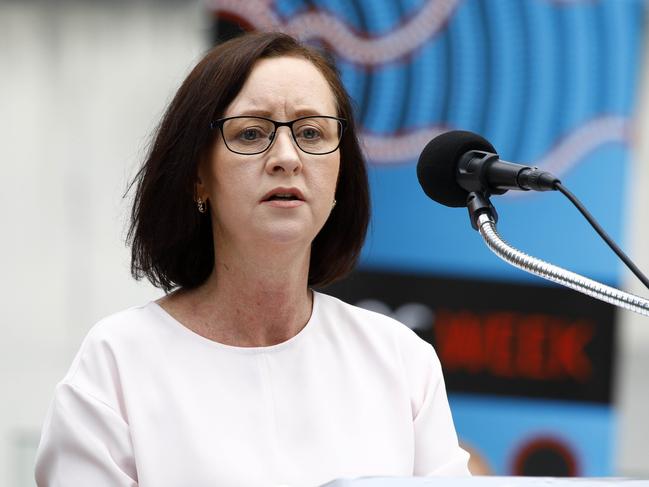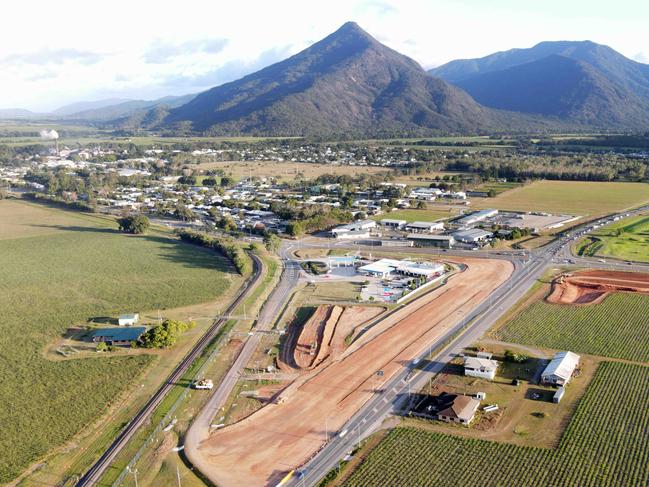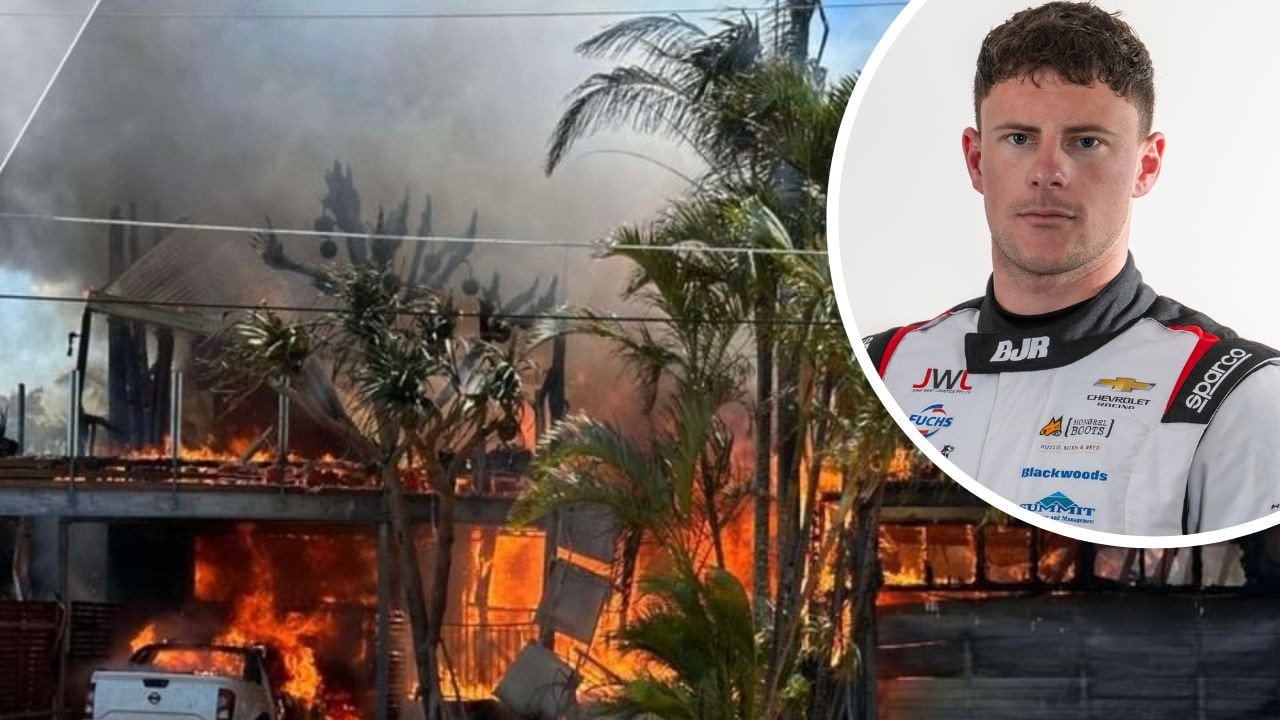Bold $46m plan to help Queenslanders struggling with mental health
Psychiatric nurses, social workers and psychologists will be sent out in ambulances to help struggling Queenslanders in areas most affected by the fatal mental health crisis.

QLD News
Don't miss out on the headlines from QLD News. Followed categories will be added to My News.
Psychiatric nurses, social workers and psychologists will be sent out in ambulances to provide “mental first aid’’ in Queensland’s suicide hot spots.
Nearly 4000 Queenslanders are among the 15,500 Australians who took their own lives in the five years from 2015 and 2019, shocking new data shows.
Natural disasters such as cyclones, drought, floods and bushfires, a lack of mental health services and rising unemployment have made rural and regional towns hot spots for suicide.
Divorce, rocky relationships, legal problems, homelessness, poverty and a history of self-harm are among top triggers for suicide, while alcohol and drug use and domestic violence are risk factors.

Mental health expert Professor Pat McGorry, executive director of Orygen and 2010 Australian of the Year, declared the data to be “so shocking – it’s like a war zone’’.
“If the cause of death was something different – like shark attacks or car accidents – it would be in people‘s faces,’’ he said.
“But because of the taboo, and that it is not spoken about freely, it is a sign that suicide is a partially hidden death toll.’’
A Courier-Mail analysis of Australian Institute of Health and Welfare (AIHW) data reveals that Queensland suicide rates are highest in the Burnett region, including Bundaberg and Gympie, with 29 deaths per 100,000 people.
Suicide rates are also devastatingly high in outback Queensland, the central highlands and the tourism towns of Cairns, the Whitsundays and Surfers Paradise.
Redcliffe has the highest suicide rate in the southeast – of 23.7 per 100,000 people followed by Ipswich, Beenleigh and inner-Brisbane.
Queensland has 10 out of the top 20 regions in Australia for suicide rates.
Queensland Health will start sending more mental health nurses, psychologists and social workers in ambulances to respond to calls for help from people suffering a mental health crisis.
The “mental first aid’’ teams, who accompany paramedics to emergencies, were trialled in Brisbane this year, working from 8am to midnight.
But they will be deployed around-the-clock next year, and the service will be expanded to Cairns, Townsville and the Sunshine Coast.
State Health Minister Yvette D’Ath said $46.5 million would be spent on mental health treatment and support services in towns dependant on the construction, tourism and service industries hit hardest by the COVID-19 pandemic this year.

Suicide Prevention Australia CEO Neives Murray said “we can’t underestimate the impact that the events of COVID19 is having today and into the future”.
“COVID-19 has amplified the factors we know link with distress and suicide, including unemployment, housing insecurity and financial stress,” she said.
“Fortunately, recent suicide deaths data in NSW and Victoria show that in contrast to some of the predictions, we are not seeing a spike in suicide rates in 2020.
“This means that the protective measures put in place by Governments across Australia are having an impact. These include things like the NSW Government’s significant investment in scaling up mental health and suicide prevention services, the Victorian Government’s investment in post-crisis aftercare, coupled with the Commonwealth Government’s support for JobKeeper and JobSeeker.
“Of course, we can’t be complacent. The next months and years will be challenging and that’s why we will work closely with Government and our members to ensure we continue to strengthen the suicide prevention and mental health systems,” Ms Murray said.
News Corp Australia this week launches Mental Health 360, bringing together mental health experts and those touched by suicide first-hand to break the taboo and discuss solutions.
Suicide Prevention Australia CEO Neives Murray said the pandemic had “amplified the factors we know link with distress and suicide, including unemployment, housing insecurity and financial stress’’.
“Fortunately, recent suicide deaths data in NSW and Victoria show that in contrast to some of the predictions, we are not seeing a spike in suicide rates in 2020,” Ms Murray said.
“This means that the protective measures put in place by Governments across Australia are having an impact. These include things like the NSW Government’s significant investment in scaling up mental health and suicide prevention services, the Victorian Government’s investment in post-crisis after-care, coupled with the Commonwealth Government’s support for JobKeeper and JobSeeker.
“Of course, we can’t be complacent. The next months and years will be challenging and that’s why we will work closely with Government and our members to ensure we continue to strengthen the suicide prevention and mental health systems,” Ms Murray said.
Sydney University’s Brain and Mind Centre policy co-director Professor Ian Hickie said unemployment and poverty was higher in rural and regional areas.
“There are also economies which are subject to more rapid changes in fortune whether that be natural events – such as floods and other natural disasters – or through the opening and closing of key industries,’’ he said.
“Young people, Indigenous people, people with very limited education and skills are over represented – all of which create a background higher intrinsic suicide rates in those communities.”
‘IT’S ABOUT FIGHTING THROUGH THE DARK TIMES’
Molly Koning was in high school when she first tried to end her life.
As a survivor of self-harm and attempted suicide, the 23-year-old Sunshine Coast woman knows the distress of living with mental illness.
“In the moment of crisis of feeling suicidal, all the emotions and feelings are overwhelming,’’ Ms Koning told Mental Health 360.
“But it does change - the sun will come up, there’ll be beautiful butterflies, there are things to look forward to.
“It’s about fighting through the dark times to see the light. There is help out there.’’

Ms Koning wants people to speak more openly about anxiety and depression, and reach out for help from a trusted family member, teacher, friend or counsellor.
“As soon as you feel bad, let that person know so you don’t start to spiral without anyone knowing what’s going on,’’ she said.
“Tell your parents or you can go online to Kids Helpline or pick up a phone and speak to a counsellor – you don’t need to leave the house.’’
Ms Koning said she tried to hide her depression for years, yet it only made life harder.
“It took me a long time to say I felt suicidal,’’ she said.
“There are so many people who don’t tell anyone until it’s too late.’’
Ms Koning said she found that walks, watching TV or playing with pets in a moment of crisis could help short-circuit her distress.
“It’s really hard because you’re so overwhelmed you feel you can’t do it any more,’’ she said.
“But sometimes if you distract yourself for half an hour you can bring your distress levels down.
“If you can, put on your favourite song or read a book, watch TV, play with the dog, take a walk in nature – anything that won’t hurt you and can distract your mind for a little bit.’’
Ms Koning said parents and friends sometimes feared talking about suicide.
“People are very worried that if you say the word it’s going to happen, but the more you tiptoe around and walk on eggshells, the worse you make the person feel,’’ she said.
“One of the biggest things is to talk about it openly.’’
Ms Koning wants schools to be more aware and supportive of students with mental illness, and for governments to provide more funding for counselling.
Originally published as Bold $46m plan to help Queenslanders struggling with mental health


